Cannabis Concentrates

With today’s advancements in processing cannabis flowers, there are more concentrates and extracts on the market than ever before. With so many options. it’s hard to tell the difference between them or know the type of process it takes to make the various types of concentrates. But don’t worry – we’ve compiled the only guide to cannabis extracts you’ll need. Let’s dive into the world of weed concentrates and find out more about each.
What Are Cannabis Concentrates And Extracts?
As a cannabis enthusiast, you’re probably familiar with the sticky crystal coating found on marijuana flower or buds. These trichomes and resin are well known for making flowers more potent. That’s because they contain all the beneficial and psychoactive cannabinoids that provide the effects of marijuana like THC, CBD and terpenes. So, what if you were to extract that pure potency for direct consumption? Meet cannabis concentrates and extracts.
THC and other cannabinoids are isolated and transformed into concentrated forms to make marijuana concentrates or extracts, which is why the best cannabis concentrates are typically sticky or gooey to the touch and highly potent. So, what’s the difference between a concentrate and an extract? Well, an extract is a concentrate, but not every concentrate is an extract. The key difference is the use of solvents in the extraction process from cannabis flowers. If a solvent is used, it’s an extract (and usually a concentrate, too). However, concentrates can also be made without the use of solvents, which we’ll dig into deeper later.
How Are Cannabis Concentrates Made?
Similar to the number of concentrates or extracts on the market today, there are just as many techniques to extract a variety of end-products. In general though, to make cannabis extracts, a solvent or solvent-less method is used to isolate the beneficial compounds from the cannabis flower.
With a solvent-type method, materials like butane, ethanol, carbon dioxide or propane are used to strip or wash away the beneficial oils from the plant matter. The extract is then ‘purged’ so the solvent evaporates from the end-product. From there, the oil will undergo a final process that differs on the type of concentrate you’re trying to achieve.
As you may have guessed, solvent-less methods avoid the use of these materials to extract the pure compounds. Instead, an extraction process using pressure, filtration or temperature isolates the essential oils to make different types of concentrates in the end. We’ll cover each concentrate and extract type next, to find out how each is made in their own individual way.
Many Types Of Extracts & Concentrates
If you’ve purchased or dabbled in using extracts and concentrates before, you know there is quite the variety in end-products – all of which look different, feel different and are even consumed differently. As extraction equipment and processes advance, so do the number of concentrate and extract products that brands are able to produce. Similarly, as the popularity of concentrates rise, so do the ways in which these goods can be made at home.
The main difference in extracts or concentrates is the texture of the final product, although one thing they all have in common is their high potency – meaning, when you dab or otherwise consume concentrates, they deliver an increased level of THC and other cannabinoids all at once. To use most concentrates or extracts, you may need a few new tools. The most common way to consume concentrates is dabbing, but you can also use a vape pen, sprinkle them on bowls or in joints, and even cook or bake them into goods.
Here are the different types of extracts and concentrates you’ll find to buy or can make yourself.
Kief
Kief is one of the simplest and most readily available concentrates to be found, considering you can find a whole stash in the bottom chamber of your grinder. Of course, kief is a solvent-less extraction, as it’s simply the powder or sift that comes off a cannabis flower. Typically, kief is separated from ground buds through a series of screens or the mesh found in a grinder or stash box. If you want to create kief without grinding, you can therefore run loose buds over a fine mesh screen with a catcher below. Many people then sprinkle the kief in their joints or on top of a packed bowl.
Hash
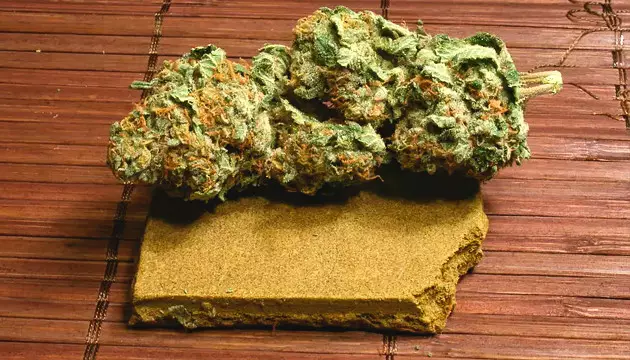
Hash is another solvent-less method, which uses a process of pressing or heating kief to form itself. There are many DIY or at-home techniques to make your own hash. This includes ice water hash, bubble hash or even finger hash that’s harvested from the gloves or fingers of someone who has been handling precious cannabis material. Growers often scrape the sticky piles of residue off their hands or gloves to make their own hash ball for later consumption. Hash can also be put into a bowl for sparking or sprinkled into joints or blunts.
Rosin
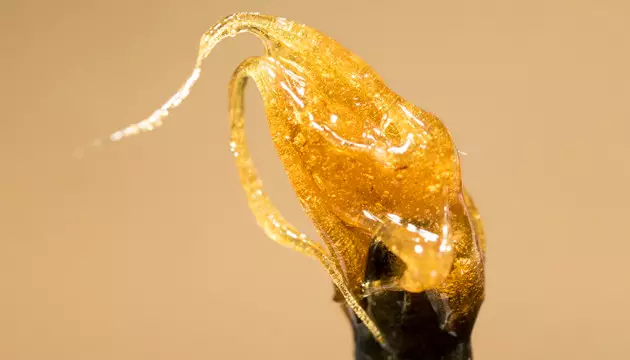
Rosin is one of the most popular do-it-yourself and solvent-less versions of concentrates, with one major difference – unlike kief or hash, rosin can be dabbed. Using heat and pressure (often with a hair straightener), the essential oils from cannabis buds or flowers are manually extracted. The yellowish golden oil looks like a more liquid-like form of what you might know as shatter. It has a solid yet sappy texture that can be used in vape pens or dab rigs, or added to bowls or joints. You can make rosin from cannabis flowers, hash or sift (kief).
Live Resin
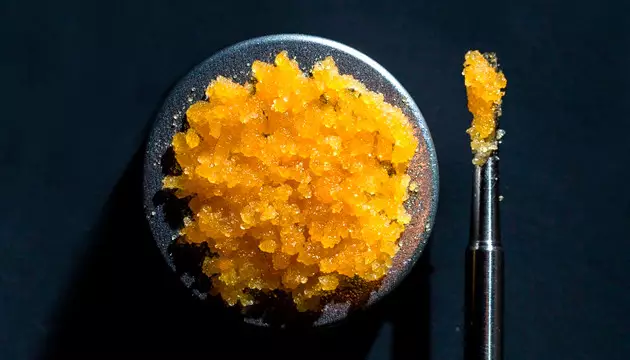
Live Resin is a concentrate that’s unique from the start. That’s because to be considered ‘live resin’, the flower is flash frozen at harvest prior to the extraction process. Freezing the flower immediately is said to capture the natural essence and components of the plant, including cannabinoid and terpene content which increases potency and flavor. To make live resin concentrate, a solvent method is used to isolate beneficial compounds from the frozen material, the most common solvent being butane. This process must be done specifically at low temperatures for the ultimate preservation of aromas and content.
Shatter
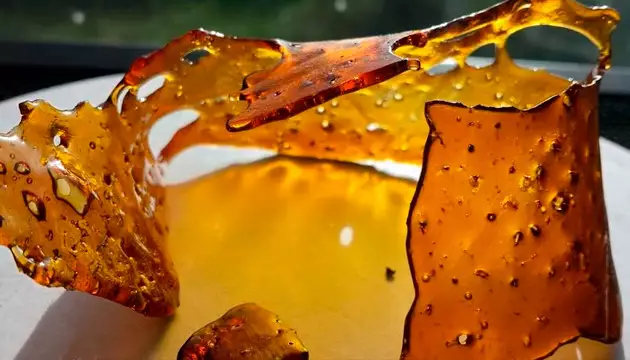
You can tell why ‘shatter’ is aptly named just by looking at its appearance. Clear but sturdy like a piece of glass, shatter is pliable, unlike most concentrates. This means you can ‘break’ off a piece to dab, add to a vape pen, or add on top of ground-up buds for extra potency. Most shatter is made through a hydrocarbon extraction process where the oil is poured and left to dry. It also undergoes an additional process that rids the extract of plant waxes and fat. This gives the concentrate its glass-like texture, with less stickiness than other extracts. Depending on the exact process or plant material used, shatter is usually golden-yellow to amber in coloring.
Budder
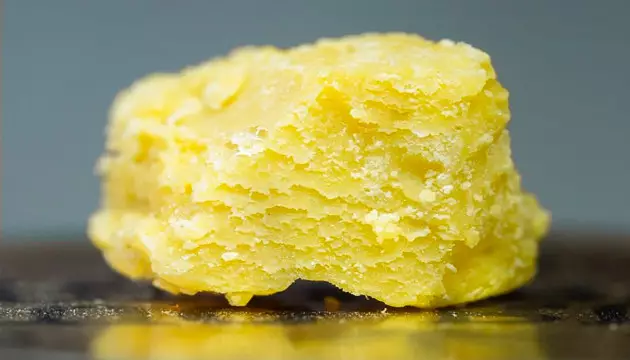
Budder, batter or badder are all versions of whipped concentrates that have a cake ‘batter’ or frosting-like texture and consistency. The end product is soft yet solid enough to dab, use in a dab rig pen, or add to a joint or blunt. Most budders on the market today have undergone a solvent type extraction process with butane or propane, although solvent-less types can be created as well. The process is similar to making shatter, only instead of letting the extract cool to dry in a slab, budder takes one extra step. Heat is applied while the material is whipped to produce the smooth texture of the final budder product.
Crumble (Honeycomb Wax)
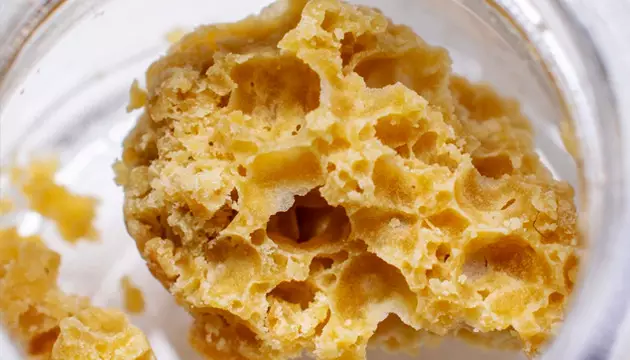
Crumble or honeycomb wax is another appropriately-titled concentrate, considering the final consistency is crumbly in nature and often looks like honeycombs. Like other concentrates, the texture is ideal for dabbing, adding to a vape pen, or sprinkling over bowls or in joints. Propane, butane or ethanol are the most common solvents used to make these types of concentrates. The ‘holes’ or crumbly final product results from a high heat process used during the solvent purging or removal technique. Essentially, by agitating the extract during this stage, the holes or combs are formed. Like budder, the concentrate is also whipped for a smoother overall texture. Another unique characteristic of crumbles and honeycomb waxes is their matte finish rather than the gloss found in other concentrates.
Pull ‘N’ Snap
Pull ‘n’ snap is like shatter but not as breakable or glass-like in nature. Like taffy, pull ‘n’ snap concentrates have a pliable consistency, and are often sold or found on parchment paper to hold its texture and allow for easy removal – or pulling and snapping. The concentrate is another example of hydrocarbon extraction or BHO cannabis oil concentrate. It also goes to show what happens when the material is left undisturbed to purge. Due to the consistency, pull ‘n’ snap concentrates are especially popular for dabbing, but can be used in a variety of other ways as well. Most connoisseurs prefer pull ‘n’ snap, since it combines similarities to wax and shatter in one.
Moon Rocks
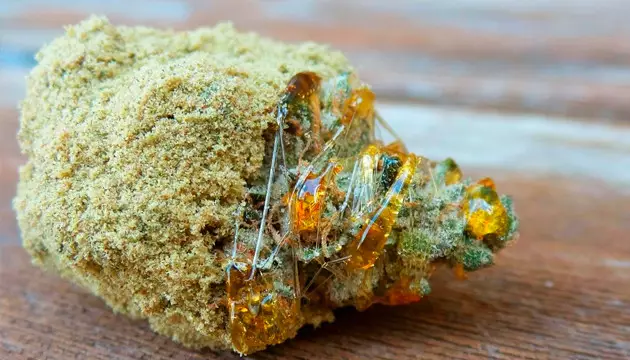
Moon rocks combine flowers and extracts for an out-of-this-world combination. The center of the ‘rock’ is made of top-shelf quality nugs that are then covered in hash oil and rolled in kief. The end appearance looks just like its namesake, and the three-layered potent high can send some users flying. In general, moon rocks normally deliver 50% THC levels and can be placed in bowls or bongs for smoking as usual. One benefit of the highly potent product is they can be made at home too. If you have good bud, oil and kief, you’re ready to roll your own rock.
Tinctures
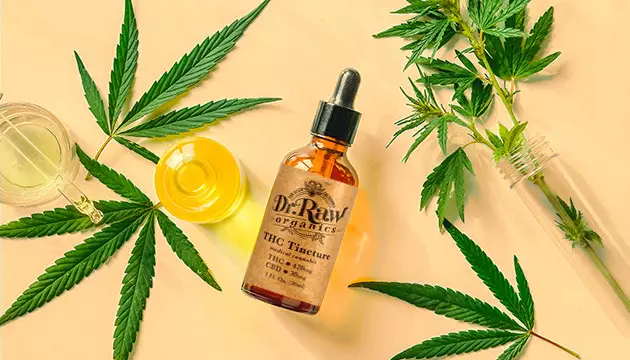
Tinctures are liquid-based extractions that are used by those who prefer sublingual delivery. To make tinctures, decarboxylated cannabis material (buds or trim) is added to a liquid base – typically, high proof alcohol like Everclear. Decarboxylating cannabis is a process of heating the plant material on low to activate the compounds. Once activated, the material is added to the base for soaking and infusion. After a few weeks, the mixture is strained and can be consumed. Tinctures can be easily made at home but are readily available for purchase as well.
THC Oil
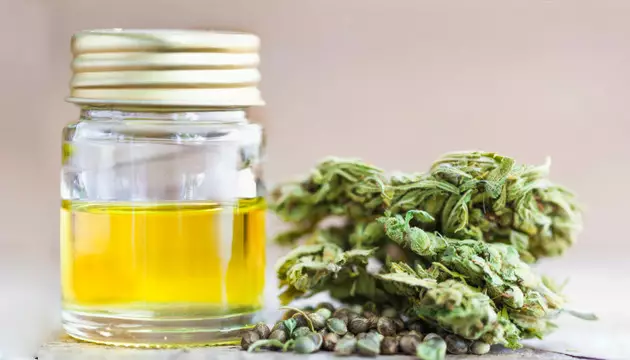
THC oil is a broad term that covers any type of oil extraction that includes THC. There are a number of different processes to infuse or extract oils containing THC, but most begin with high-quality cannabis flowers and can be used in a number of ways. Oils can be used to make edibles, taken sublingually or added to food and beverages. Not only that, but they can also be used to make moon rocks, or added to dabs or bowls for an extra elevation of effects.
BHO & CO2 Extract Oil
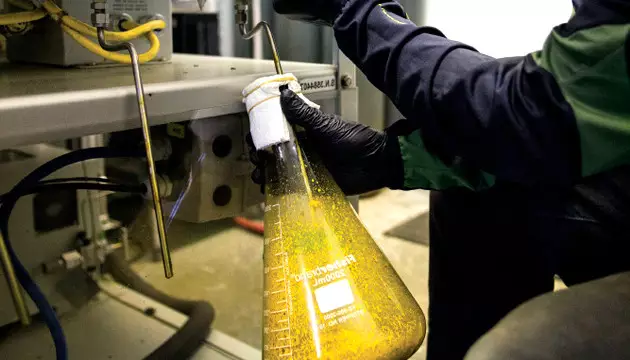
BHO is short for ‘butane hash oil’, which classifies the process of using butane to extract hash oil from cannabis plants. Many concentrates that use hydrocarbon extraction processes are often referred to as BHO’s, too. BHO cannabis oil concentrates use a closed loop system and essentially ‘blast’ the material with butane or propane to strip or isolate the oils inside. CO2 extract oil is relatively the same, but with CO2. CO2 oils come from a specific process called supercritical fluid extraction (SFE), in which compounds and oils are isolated by the use CO2 at a critical temperature to do so.
RSO – Rick Simpson Oil
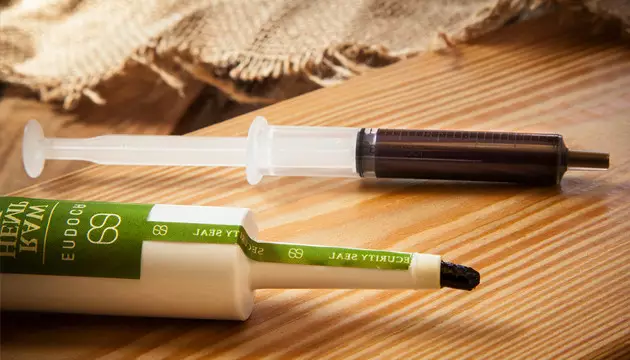
Made primarily for medical use, Rick Simpson Oil is a thick liquid used mostly in vape pens or filled in capsules. RSO also comes in syringes for dispensing. The sturdy oil is dark in color and was popularized by Rick Simpson himself, hence its name. After becoming a cancer patient, Simpson grew his own cannabis and made the oil to successfully heal cancerous growths, which explains its current use among the medical community. The oil is made with a variety of solvents and can be done at home, adding to its convenience and versatility.
Distillates, Isolates & Crystalline

Distillates, isolates and crystallines are some of the most refined and pure versions of extracts and concentrates. These undergo a number of distilling processes that clarify cannabis contents and compounds for purely potent products. Distillate is a clarified liquid that’s often used like a sauce to add potency to dabs, bowls or joints. Isolates and crystallines separate specific cannabinoids like CBD, THC and THCA, among others, to the degree of 99.9% levels of potency. In this process, the compounds are removed from all other plant materials including terpenes, flavonoids, fats, etc., hence their clarity and purity.
Store Extracts Safely
Now that you know all about different weed concentrates you can appropriately use and even make your own... what about storage? What’s the best way to store cannabis concentrates? Because heat can agitate and degrade cannabis compounds, the first step is to keep your extracts in a cool, dark area. You can keep them in the fridge if you’d like, but don’t think the freezer will preserve the material for longer. In fact, freezing temperatures can actually degrade potency and compounds. Be sure to also store your concentrates or extracts in containers that will allow them to be removed easily. We recommend using parchment paper for shatter, and glass or silicone jars for budders and crumbles.
***
Overall, concentrates and extracts are some of the most potent and pure products on the cannabis market today – not to mention being versatile for use and presenting a number of goods you can make at home on your own. All concentrates and extracts have their own unique benefits, and each presents a perfect chance to experiment with the limitless possibilities of cannabis.
Herbies Head Shop expressly refuses to support the use, production, or supply of illegal substances. For more details read our Legal Disclaimer.

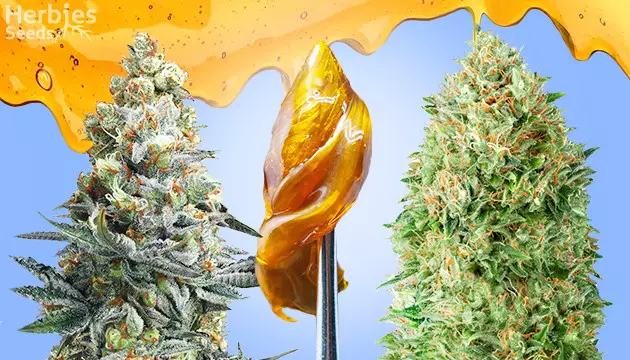
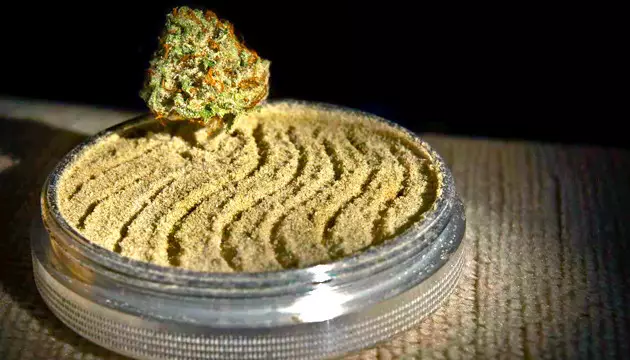
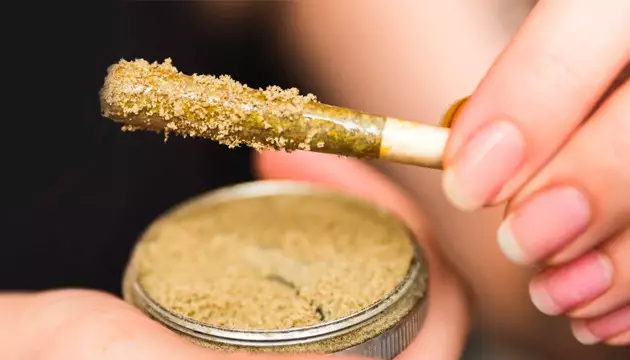
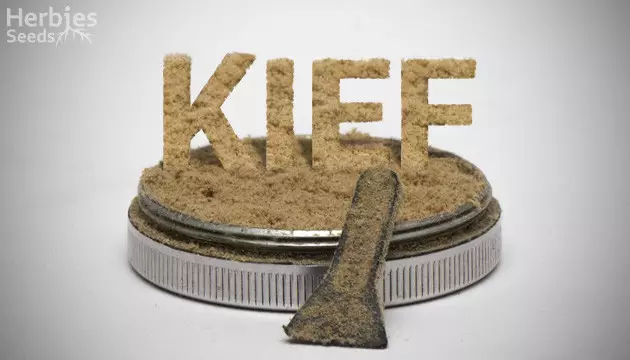
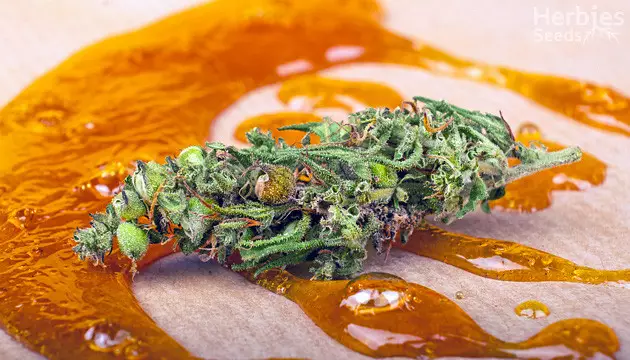
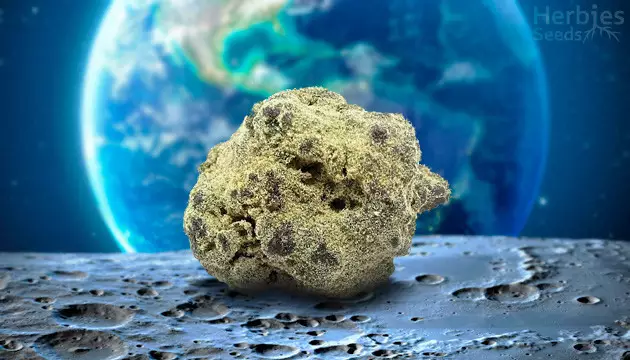






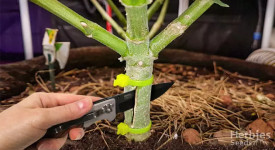
Thank you for leaving a comment for us!
Your feedback will be posted shortly after our moderator checks it.
Please note that we don’t publish reviews that: